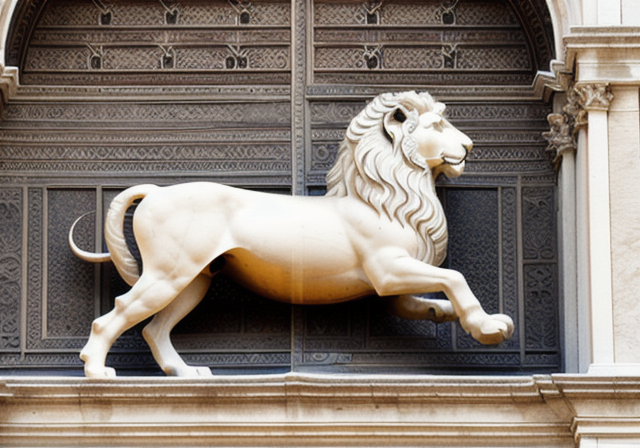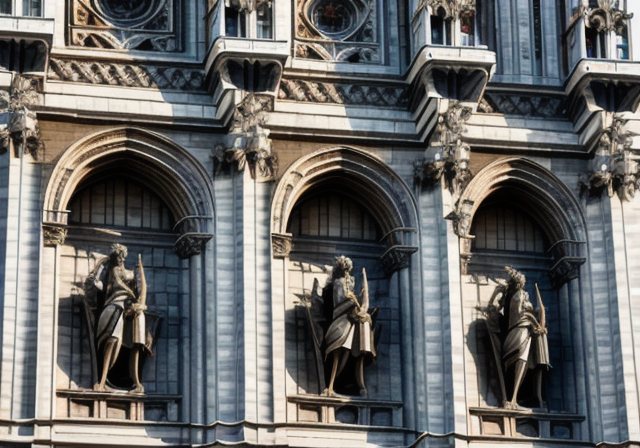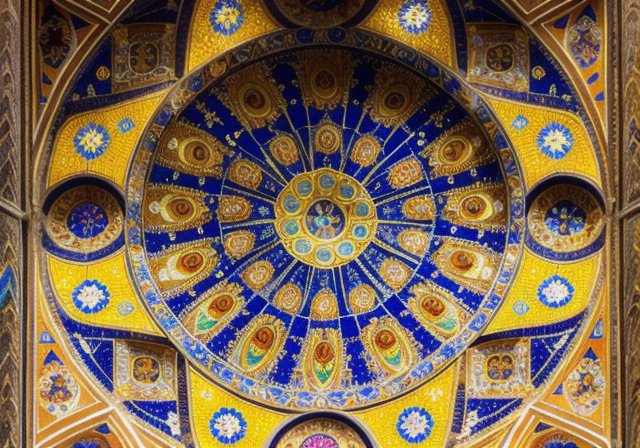Preserving and promoting Italy’s architectural heritage is crucial for the country’s cultural and economic growth. Italy’s architectural heritage attracts millions of tourists each year, generating significant revenue for the country. Moreover, preserving Italy’s architectural heritage is essential for future generations to learn about and appreciate the country’s history and culture. Italy’s architectural heritage is a testament to the country’s past and a bridge to its future.
Readers can expect to learn about Italy’s vast architectural heritage in this article, from ancient structures to modern buildings. We will explore the history and cultural significance of some of Italy’s most iconic architectural structures. Additionally, we will highlight some lesser-known architectural structures that are equally important to Italy’s architectural heritage. This article is a celebration of Italy’s rich architectural heritage and an invitation to explore it further.
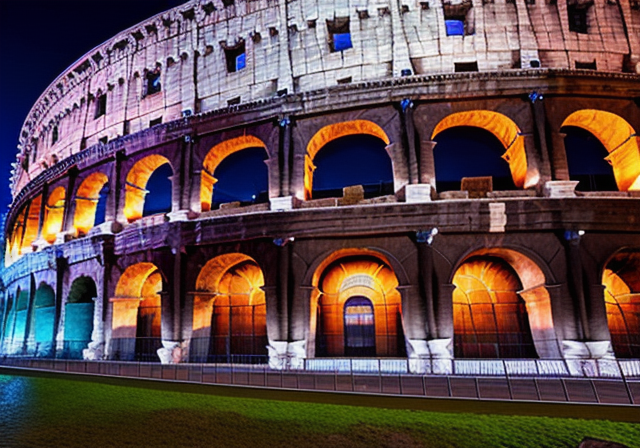
Main Types of Italian Architecture
Italian architecture is known for its rich history and diverse styles. Throughout the centuries, different architectural movements have influenced and shaped the country’s buildings, resulting in a unique blend of styles that can be seen in Italy’s cities and countryside. Here are some of the main types of Italian architecture:
Romanesque Architecture
Romanesque architecture originated in the 9th century and lasted until the 12th century. It is characterized by rounded arches, barrel vaults, and thick walls with small windows. One of the most famous examples of Romanesque architecture in Italy is the Leaning Tower of Pisa, which was built in the 12th century. Its unique design and leaning structure have made it an iconic symbol of Italian architecture.
Gothic Architecture
Gothic architecture emerged in Italy in the 12th century and lasted until the 16th century. It is characterized by pointed arches, ribbed vaults, flying buttresses, and large stained-glass windows. One of the most famous examples of Gothic architecture in Italy is the Milan Cathedral, which took almost six centuries to complete. Its intricate design and imposing structure make it one of the most impressive Gothic cathedrals in the world.
Renaissance Architecture
The Renaissance period began in Italy in the 14th century and lasted until the 17th century. It marked a significant shift in architectural style, as it emphasized symmetry, proportion, and the revival of classical forms. Renaissance architecture is characterized by domes, columns, and pediments, as well as the use of perspective in design. One of the most famous examples of Renaissance architecture in Italy is the Palazzo Pitti in Florence, which was built in the 15th century and later became the residence of the Medici family.
Baroque Architecture
Baroque architecture emerged in Italy in the 17th century and lasted until the 18th century. It is characterized by grandeur, drama, and ornate decoration, with a focus on creating a sense of movement and emotion. Baroque architecture is often associated with Catholicism, as it was used to convey religious themes and inspire awe in the viewer. One of the most famous examples of Baroque architecture in Italy is the Trevi Fountain in Rome, which was completed in the 18th century and features intricate sculptures and dramatic water features.
Neoclassical Architecture
Neoclassical architecture emerged in Italy in the 18th century and lasted until the 19th century. It was a revival of classical forms, inspired by the architecture of ancient Greece and Rome. Neoclassical buildings are characterized by clean lines, symmetry, and a sense of order and balance. One of the most famous examples of Neoclassical architecture in Italy is the Teatro alla Scala in Milan, which was built in the late 18th century and is still one of the most celebrated opera houses in the world.
Art Nouveau Architecture
Art Nouveau architecture emerged in Italy in the late 19th century and lasted until the early 20th century. It is characterized by sinuous lines, asymmetry, and a focus on natural forms and motifs. Art Nouveau buildings often feature intricate details, such as stained glass, ironwork, and mosaics. One of the most famous examples of Art Nouveau architecture in Italy is the Casa Batlló in Barcelona, which was designed by the renowned architect Antoni Gaudí.

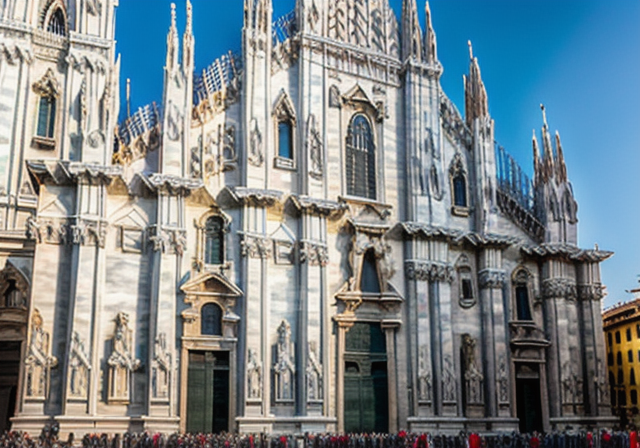
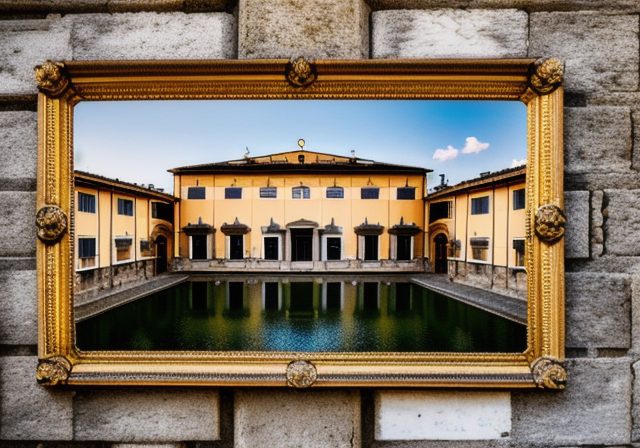
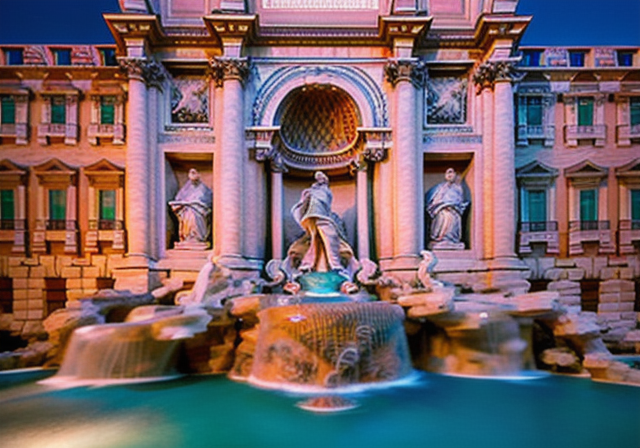

From the grandeur of Baroque architecture to the simplicity of Neoclassical design, Italy’s architectural heritage offers a rich and diverse array of styles and structures. Each period has left its mark on the country’s buildings, creating a unique and captivating landscape of architectural wonder. Whether you are exploring the ancient Roman ruins or admiring the intricate details of a Renaissance palazzo, Italy’s architecture is sure to leave a lasting impression.
Lesser-Known Italian Architectural Gems
Italy is renowned for its stunning architecture, from the iconic Colosseum in Rome to the Leaning Tower of Pisa. However, there are many lesser-known architectural gems throughout the country that are equally impressive but often overlooked by tourists. Here are just a few examples:
The Trulli of Alberobello
Located in the southern region of Puglia, the Trulli of Alberobello are a unique architectural style characterized by conical roofs made of limestone slabs. Originally built as temporary shelters for agricultural workers, these distinctive structures have become a symbol of the region and are now protected as a UNESCO World Heritage site. Walking through the streets of Alberobello, visitors are transported to a bygone era and can marvel at the intricate design and craftsmanship that went into constructing these charming buildings.
The Tower Houses of San Gimignano
The medieval town of San Gimignano in Tuscany is famous for its 14 remaining tower houses, which were built by wealthy families in the 13th and 14th centuries as a display of their wealth and power. At their peak, there were over 70 tower houses in the town, but many were destroyed over the centuries. Today, visitors can climb to the top of the remaining towers for breathtaking views of the surrounding countryside, or simply wander through the narrow streets and imagine what life was like in medieval Italy.
The Sassi and the Park of the Rupestrian Churches of Matera
The city of Matera, located in the southern region of Basilicata, is home to the Sassi, a complex of cave dwellings carved into the soft rock of the surrounding hills. For centuries, the inhabitants of Matera lived in these caves, which were often cramped and unsanitary. However, in recent years, many of the caves have been renovated and turned into stylish hotels and restaurants, attracting tourists from all over the world. In addition to the Sassi, Matera is also home to the Park of the Rupestrian Churches, a collection of over 150 rock-cut churches and chapels dating back to the 8th century.
The Royal Palace of Caserta
The Royal Palace of Caserta, located in the Campania region, is one of the largest royal residences in the world, second only to the Palace of Versailles in France. Built in the 18th century for the Bourbon kings of Naples, the palace boasts over 1,200 rooms, including a stunning ballroom with a frescoed ceiling that is over 36 meters long. The palace also features a vast park with fountains, waterfalls, and a large English-style garden. Visitors can easily spend an entire day exploring the palace and its grounds, marveling at the opulence and grandeur of this magnificent building.

These are just a few examples of the many lesser-known architectural gems that can be found throughout Italy. Whether you are interested in history, culture, or simply appreciate beautiful design, there is something for everyone in this stunning country.

Unusual Details in Italian Architecture
Italian architecture is renowned for its beauty and grandeur, but beyond the obvious, there are many unusual details and hidden symbols that make it even more fascinating. From the hidden symbols in the architecture of Venice to the unique ironwork of the Tuscan Gothic style, Italian architecture is full of surprises.
The Hidden Symbols in the Architecture of Venice
Venice is one of the most beautiful cities in the world, and its architecture is full of hidden symbols and meanings that are often overlooked by visitors. One of the most fascinating examples is the use of the winged lion, which is the symbol of St. Mark, the patron saint of Venice. This symbol can be found in many different places throughout the city, including on the façade of the Doge’s Palace and on the flag of the city.
Another interesting symbol found in Venetian architecture is the quatrefoil, which is a decorative element that is often used in Gothic architecture. In Venice, the quatrefoil is often used to represent the four evangelists, and can be found on many churches and other buildings throughout the city.
The Significance of the Number Three in Italian Architecture
The number three is considered to be a sacred number in many cultures, and it is also significant in Italian architecture. One of the most famous examples is the Piazza del Popolo in Rome, which is designed in the shape of a trident, with three streets radiating out from the center. This design is meant to represent the three aspects of the Holy Trinity.
The number three can also be seen in the arches and columns of many Italian buildings, including the Colosseum in Rome. The Colosseum has three levels of arches, and each level has a different style of column. This use of the number three is meant to represent the three orders of classical architecture: Doric, Ionic, and Corinthian.
The Use of Grotesques and Gargoyles in Italian Architecture
Grotesques and gargoyles are decorative elements that are often found on Gothic buildings, but they are also used in Italian architecture. These ornamental figures are often carved into the stone or metal of a building, and they are meant to serve as a decorative element as well as a way to divert rainwater away from the building.
One of the most famous examples of grotesques and gargoyles in Italian architecture can be found on the Duomo di Milano. The cathedral is adorned with hundreds of these ornamental figures, including the famous “Madonnina” statue that sits atop the spire.
The Unique Ironwork of the Tuscan Gothic Style
The Tuscan Gothic style is a unique blend of Gothic and Renaissance architecture that is characterized by its use of intricate ironwork. This ironwork can be seen in the balconies, railings, and other decorative elements of many Tuscan Gothic buildings.
One of the most famous examples of Tuscan Gothic ironwork can be found on the Ponte Vecchio in Florence. The bridge is adorned with dozens of shops that are supported by iron brackets, and the railings are also made of iron. This use of ironwork is meant to give the bridge a delicate and elegant appearance, while also providing strength and durability.
Italian architecture is full of surprises, and these unusual details and hidden symbols are just a few examples of the many fascinating elements that can be found in Italian buildings. Whether you are an architecture enthusiast or just a casual observer, there is always something new to discover in the world of Italian architecture.
